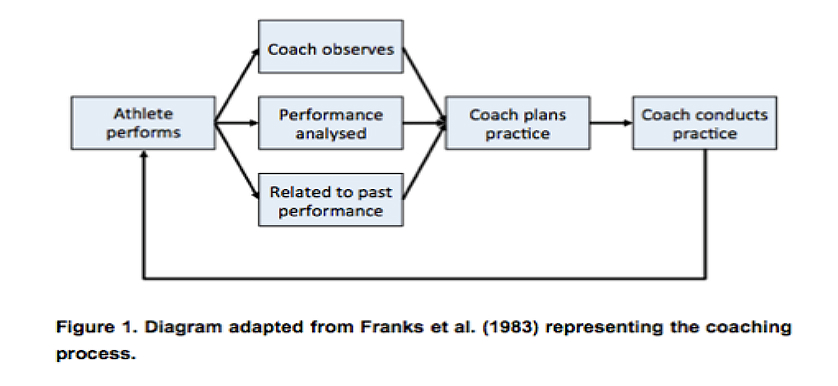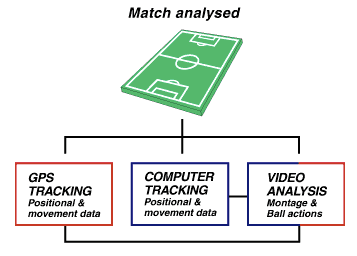Game measurement – a recipe for success

“You always have to be at the top of your game and you’re always improving because of the people around you. I train the way I do every day because in the end, I love what I do. When I’m having a rough day, I remind myself how great my job is.” – Shannon Boxx
The most popular sport worldwide, attracting millions of fans, beliefs and emotions each year, is without any doubt soccer. Even if soccer is the most loved sport in the world and people involved spend millions of dollars on everything related to it, making a quantitative performance analysis still represents a challenge because of the tactical complexity and disrupted movements of the ball throughout a match.
Other appreciated sports like basketball or handball, can develop complex measuring systems to reveal each and everyone’s contribution to the final result due to the fact that there are fewer players on the court/pitch during a game.
Now, although soccer games don’t rack up numbers, since the whole team collaboratively works for a mere few goals, in-depth and complex measurements can still be generated for every game, since stats like shots on target, recoveries and successful passes typically are not a great amount of information to be scrutinized and can prove to be a useful tool when gauging player performance or post-match analysis.
Moreover, the crucial aspect of winning is achieved by the degree of cohesion and individual performance of all the players in a team. Therefore, player’s roles and abilities are mixed together with the hope of achieving positive results. Combined player attributes bring value to the overall performance of the team. The real dimension of a soccer player’s performance is misleading, because individual performance can be masked by the team’s strategy; scoring and assisting have different measurements but those count less when taking into consideration specific objectives that each team has in mind. As an example, an individually-gifted player may wish to undertake a risky play, which might net him a flashy goal but can also backfire and result in loss of pressure. This is known by the coaching staff, who instruct him to perform team-focused plays; ultimately, his own performance measurement may come out a bit on the thin side, but it may be what it takes for his team to win.
Monitoring player’s performance during training sessions enhances staff knowledge about the current team and player situation and helps coaches improve individual preparation sessions in accordance with what is needed.

Over the last years, various soccer analysis systems have emerged on the market, each one offering different statistical information:
- Basic game systems simply analyses the match in real or recorded time, generating basic data inputs for statistical information like tackles, passes, number of goals;
- Video montage software gives coaches the opportunity to slice a match in parts and create a highlights video with the most significant bits of it, thus being able to extract and visualize the information they want. This measurement is known as a digital time code, and specific match events such as goals, tackles or passes are recorded exactly when they occur;

- Modern digital cameras, sensitive pads and voice recognition systems, which can be connected to a computer-based software solution have made data input speedier and more precise, leaving less room for errors. But this entire system relies on a match analyst, who ultimately can press a wrong button and mess up a player or a team’s statistical performance. This kind of mistakes led to the development of next level of soccer performance monitoring, made by advanced systems which automatically input data for each player on the field;
- Cutting-edge computerized systems that will automatically calculate the position of a player and track his movements, are growing in importance nowadays. These type of systems require the installation of many high resolution video cameras, in order to cover the entire pitch so that each player’s position and movement is always recorded, since every single device has a different color assigned to it. Players’ color distinction, complex trigonometry, mathematical algorithms and digital video/image processing techniques provide a higher degree of accuracy for performance measurement, because it attempts to avoid other moving objects like referees, substitutes or staff members;
- Global Positioning Systems could represent the next big thing in sports. By implementing a GPS-based system which will analyze a match or training session’s performance, we can create real-time, physical activity profiles for players, offering coaches the possibility of having an instant change to an event on the field. GPS systems have the advantage of being extremely accurate if the portable GPS sensor if mounted on a player. Due to the high impacts often received in soccer, the microchip transmitters may break unless they are robust or well-protected. These performance measurements can provide detailed comparisons between players, enhancing team selection and development, allowing players to be assigned to their most valuable role or detecting a particular weakness in his game performance and calculate the best possible training program to improve it.
The data produced by measurements must somehow be easily and safely stored. Modern databases allow storing, retrieving and comparing data in a professional and efficient manner. The whole game can then be reconstructed in 2D/3D format for in-depth staff analysis. This allows the coach to visualize the movements of his players, linked to the video of the game, enabling a powerful way of evaluating and understanding tactical, technical and physical performance, which in the end leads to further improvement.
- Image source: Pixabay

Tags: Data analysis, Individual Performance, Strategy, Team Performance





